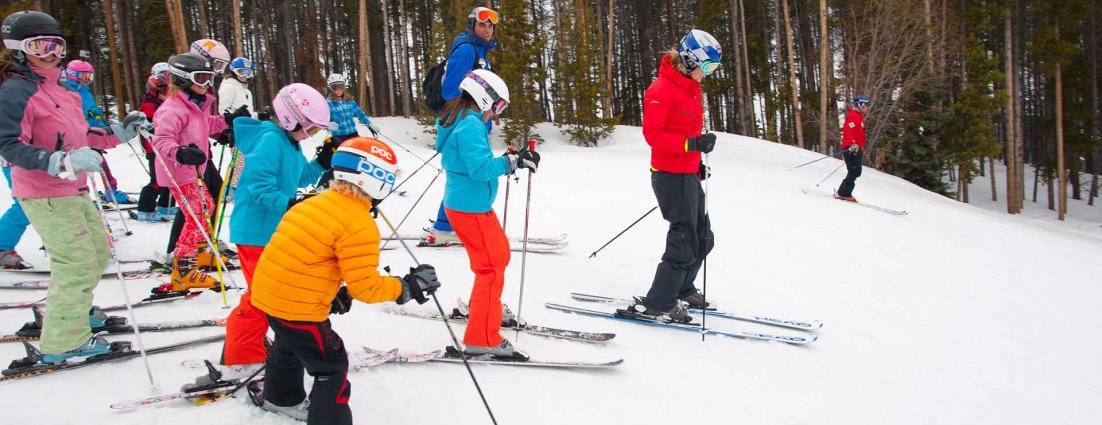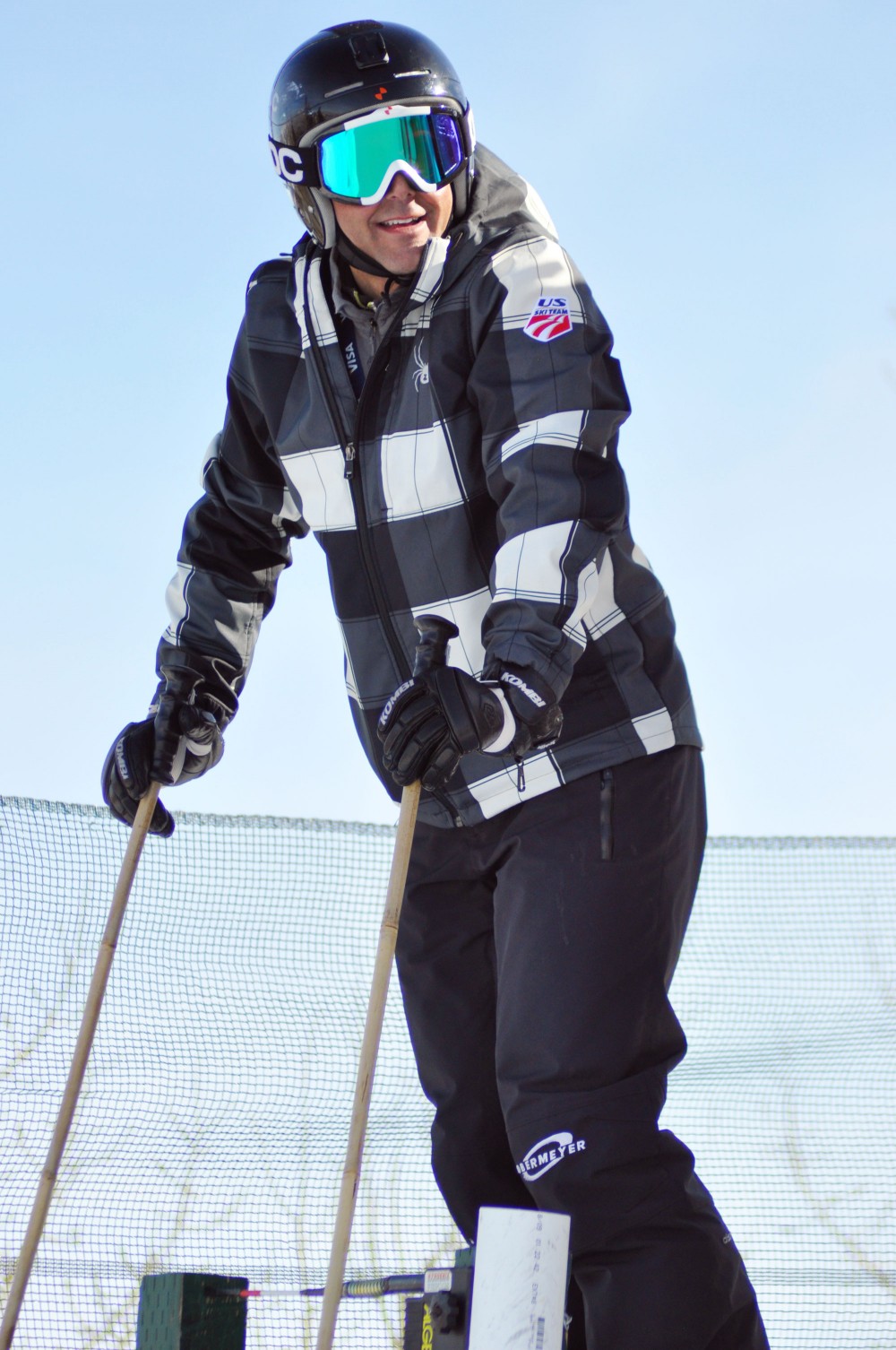Should You Put Your Kid on Ice This Summer?
03.18.2017 | Edie Thys Morgan

Young racers can get through that awkward stage of limb alienation by getting on snow regularly. And yep, regular intervals at ski summer camps let you start the season strong — or just represent one more phase of an endless winter.
But parents may still be agonizing over summer skiing. Is it right for my kid? How much? When? How far?
“Take a deep breath — it’s all going to be OK!” says Doug Lewis, who did plenty of summer skiing as a top racer, and has developed some excellent insights on off-snow training during 23 years of running ELITEAM summer camps.
Here, Lew reviews a few pointers to help get you or your child starting next winter in minty-fresh condition.
Pros of summer skiing
- Continuity of staying on snow cements gains from the previous year and jump-starts progress into the next season
- Low-pressure environment for working on everything from fundamentals to specific technical challenges
- Dialing in new equipment
- Fun
Cons of summer skiing
- Expense
- Missing out on summer fun, summer school, summer jobs, family vacations
- Time away from other sports and fitness goals
- No guarantees on either snow or weather
- Potential for injury and burnout
Volume
More is not always better. Through the ages, many kids did just fine without a lot of summer skiing. Phil and Steve Mahre preferred waterskiing to snow skiing in summer; Jimmy Cochran opted out of camps to finish his high school baseball season; and Bode Miller — well, I’m pretty sure he marched to his own drummer year-round.
Once you’re over the hump, and committed to summer skiing, remember that all days on snow are not created equally. Simply logging days is not going to maximize the experience.
Timing
“If you go in May, you can start off stronger and build intensity immediately,” says Lewis. “This is most effective if you can follow it up with more late summer training. If you go in June or July, it may take one to two days at the beginning of your camp to get back on your skis, and you may lose some of your gains if you don’t get back on snow for another three months. But your motivation will be high after two months off snow, and you can hammer on repetitions with plenty of time to recover. If you head to the Southern Hemisphere in August or September, you’ll need more days overall because of travel and the time it takes to get up to speed, but you may get a bigger bump in late October when the season starts up again.”

Goals
“Be it learning a specific skill, correcting a certain technical flaw, cementing muscle memory or coming back from injury,” says Lewis, “having a focus makes time on snow more productive and reveals areas where you need work.”
Intensity
“Every run on snow is precious,” says Lewis. “Get the most of each day by being the first one on the lift (wearing boots in the van helps) and catching the last chair up; minimizing breaks by bringing plenty of food/water and refueling on the chairlift; and using a pre-run routine to maintain focus and intensity.”
Fellow skiers
“I learned better by watching rather than through explanation,” says Lewis. “Whenever I got to train off-season next to the Austrians or Swiss, and could steal what my competition was doing right, it was a huge advantage.”
Coaches
“If you can’t ski with your current or next year’s coach,” says Lewis, “do your homework, and pick a quality camp that will be able to touch base with your home coach. Often hearing the same thing but from a different coach in a different way is just what an athlete needs to ‘get it.’”
No snow? No problem
As mentioned above, skiing this summer may not work for a variety of reasons. There are many options that may be even better (and cheaper) for an aspiring ski racer than on-snow training. Doug’s ELITEAM summer training camps are, hands-down, my kids’ favorite camps of any kind.
As a parent, sending kids to a camp that combined training, nutrition, teamwork and sports psychology with intensity and fun was a no-brainer that paid huge and ongoing dividends.
Here Doug runs through some of the key ELITEAM concepts that can help kids, whether they’re training at an organized camp, informally with a group of friends or on their own.
Agility/coordination work builds critical pathways between your brain and muscles, which enables athletes to create and cement new movements. Athletes ages 8 to 14 are at the prime age to learn new movements.
Aerobic fitness work in the summer pays dividends in the winter by allowing you to train at a higher energy level throughout a long on-snow training day.
Anaerobic power is essential to many aspects of skiing — carving a clean arc; holding on hard snow; finishing a long GS without fatigue; and surviving a bumpy, rutty, nasty course. Without it, training becomes less productive.
Playing other outdoor sports you love, or learning new skills such as unicycling, slacklining, yoga, bouldering or trail running support the general athleticism every top skier needs.
Brain Training. The off-season is a great time to plant the seeds of sports psychology that will lead to the mental strength you need to push yourself and work harder than the competition. ELITEAM’s “Sufferfest” teaches athletes to dig deep, and to find that inner strength and call on it in tough situations.
Establish winning routines such as a daily morning run, stretching, strength and core exercises. Hard work leads to confidence, which leads to success.
Eat and drink right to learn how food is fuel — for powering your body to perform how and when you need it to. Basic sports nutrition is a big part of the education at ELITEAM and something to learn during the summer through a class, reading or time in the kitchen.
Bottom line
Motivation and a love of skiing is THE most important thing to becoming a successful and happy athlete. Sometimes unplugging from skiing is the best way to recharge that love. The best decision is the one that works for you and your family financially, logistically and personally. One summer does not make or break a ski racing career.